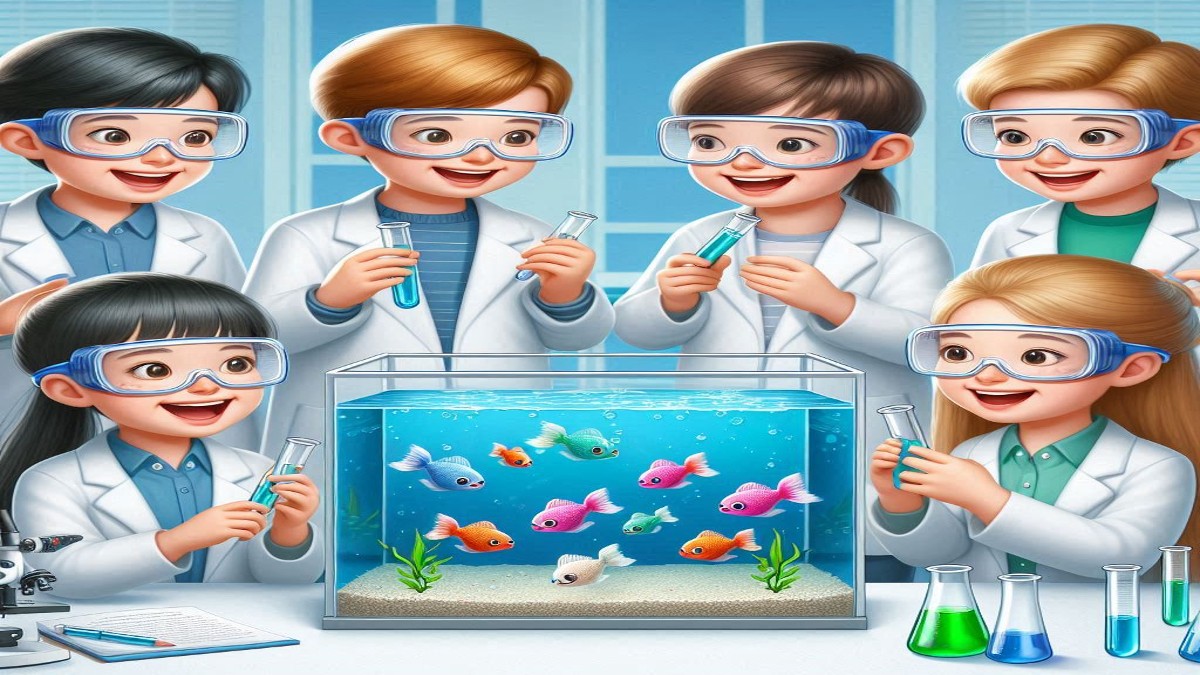
Cloning Aqua Pets
Cloning Aqua Pets, the concept of cloning has fascinated humanity since the dawn of science fiction. From the sheep named Dolly to the potential for human organ replication, cloning has sparked imaginations and ethical debates alike.
One of the latest frontiers in this intriguing field is the cloning of aqua pets. As technology advances, the potential to clone our beloved aquatic companions becomes increasingly viable, promising a future where the loss of a pet may no longer be permanent. This article explores the science behind cloning, the ethical considerations, and the potential impacts on the aquaculture industry and pet owners.
The Science of Cloning
Cloning, in its most basic definition, is the process of creating a genetically identical copy of an organism. This process can occur naturally, as in the case of identical twins, or be induced artificially in a lab. The most common method of artificial cloning is somatic cell nuclear transfer (SCNT), which involves transferring the nucleus of a somatic cell into an egg cell that has had its nucleus removed.
In the context of aqua pets, cloning involves several intricate steps:
- Cell Collection: Cells are collected from the donor aquatic pet. These cells can come from various tissues, but skin cells are commonly used due to their ease of collection and high viability.
- Enucleation: The nucleus of an egg cell from the same species is removed to create an enucleated egg cell.
- Nuclear Transfer: The nucleus from the donor cell is inserted into the enucleated egg cell.
- Activation and Culturing: The reconstructed egg is then chemically or electrically stimulated to start dividing and developing into an embryo.
- Implantation and Growth: The embryo is implanted into a surrogate host or incubated in vitro until it develops into a viable offspring.
Advantages of Cloning Aqua Pets
Genetic Preservation
One of the primary advantages of cloning aqua pets is the preservation of unique genetic traits. Rare and exotic species with specific desirable characteristics, such as vibrant colors or specific behavioral traits, can be preserved and replicated. This ensures that these traits are not lost over generations due to selective breeding or environmental factors.
Replacing Lost Pets
For many pet owners, the bond with their aqua pets is profound. The ability to clone a beloved pet offers a way to alleviate the grief associated with their loss. While the clone may not be the exact same individual in terms of personality, it provides a sense of continuity and the comfort of a familiar presence.
Research and Conservation
Cloning can play a significant role in conservation efforts. Endangered species of aquatic animals can be cloned to bolster their populations and maintain biodiversity. Additionally, cloned organisms provide consistent models for scientific research, reducing the variability that comes with genetic differences in traditionally bred animals.
Ethical Considerations
While the advantages of cloning are compelling, they are accompanied by significant ethical concerns. The idea of creating a genetically identical copy of an organism raises questions about identity, individuality, and the intrinsic value of life.
Animal Welfare
The cloning process is not without its risks and challenges. High rates of failure, abnormalities, and premature aging have been observed in cloned animals. Ensuring the welfare of both the clones and the surrogate hosts is a major concern. The potential for suffering and the ethical treatment of these animals must be carefully considered.
Biodiversity and Genetic Diversity
Relying heavily on cloning for species preservation or pet replacement could lead to a reduction in genetic diversity. A genetically homogenous population is more susceptible to diseases and environmental changes. Maintaining genetic diversity is crucial for the resilience and adaptability of species.
Commercialization and Accessibility
The commercialization of pet cloning raises issues of accessibility and equity. Cloning services are expensive, making them available only to a wealthy few. This could exacerbate social inequalities and lead to ethical dilemmas about who has the right to clone and for what purposes.
The Impact on the Aquaculture Industry
The aquaculture industry, which encompasses the breeding, rearing, and harvesting of aquatic organisms, stands to be significantly impacted by advancements in cloning technology. The potential benefits and challenges of cloning in this context are multifaceted.
Enhanced Breeding Programs
Cloning can enhance breeding programs by ensuring the propagation of individuals with desirable traits such as rapid growth, disease resistance, and high reproductive output. This can lead to increased productivity and efficiency in aquaculture operations, contributing to food security and economic growth.
Conservation of Wild Populations
Cloning can aid in the conservation of wild populations by providing a method to replenish stocks without over-exploiting natural habitats. This is particularly important for species that are overfished or face habitat destruction. By maintaining a balance between wild and farmed populations, cloning can contribute to the sustainability of aquaculture.
Ethical and Environmental Concerns
The introduction of cloned organisms into aquaculture systems raises ethical and environmental concerns. The potential for escaped clones to interbreed with wild populations could disrupt natural genetic diversity and ecological balance. Additionally, the welfare of cloned organisms in commercial settings must be addressed to ensure humane treatment and ethical practices.
Future Prospects and Challenges
The future of cloning aqua pets is both promising and uncertain. As technology advances, the efficiency and success rates of cloning are likely to improve, making it a more viable option for pet owners and the aquaculture industry. However, several challenges must be addressed to realize the full potential of cloning.
Technological Advancements
Continued research and development in cloning technology are essential to overcome current limitations. Improving the efficiency of nuclear transfer, reducing the occurrence of abnormalities, and ensuring the long-term health of clones are critical areas of focus. Advances in genetic engineering and stem cell research may also contribute to more successful cloning outcomes.
Regulatory and Ethical Frameworks
The development of robust regulatory and ethical frameworks is crucial to guide the responsible use of cloning technology. These frameworks should address animal welfare, genetic diversity, and the potential impacts on ecosystems and society. International collaboration and consensus are needed to establish standards and guidelines that ensure the ethical use of cloning.
Public Perception and Acceptance
Public perception and acceptance of cloning play a significant role in its adoption and success. Education and transparent communication about the benefits, risks, and ethical considerations of cloning are essential to build trust and understanding. Engaging with stakeholders, including pet owners, scientists, and policymakers, can help shape informed opinions and foster responsible use of cloning technology.
Conclusion
Cloning aqua pets represents a fascinating intersection of science, ethics, and the human-animal bond. The potential to preserve unique genetic traits, replace lost pets, and contribute to conservation efforts is compelling. However, the ethical concerns, challenges to biodiversity, and the need for responsible practices cannot be overlooked.
As we navigate this promising yet complex field, it is essential to balance the benefits with the ethical and environmental considerations, ensuring that cloning technology is used responsibly and compassionately. The future of cloning aqua pets holds great promise, but it also demands careful thought and conscientious stewardship.
Summary
Cloning aqua pets, the process of creating genetically identical aquatic animals, offers promising benefits such as preserving unique genetic traits, replacing lost pets, and aiding conservation efforts. The cloning process involves collecting cells from a donor, transferring the nucleus to an enucleated egg cell, and developing the embryo.
While cloning can enhance breeding programs and conservation in the aquaculture industry, it raises ethical concerns about animal welfare, genetic diversity, and commercialization. Technological advancements, regulatory frameworks, and public acceptance are crucial for responsibly harnessing the potential of cloning aqua pets, balancing scientific progress with ethical considerations.






